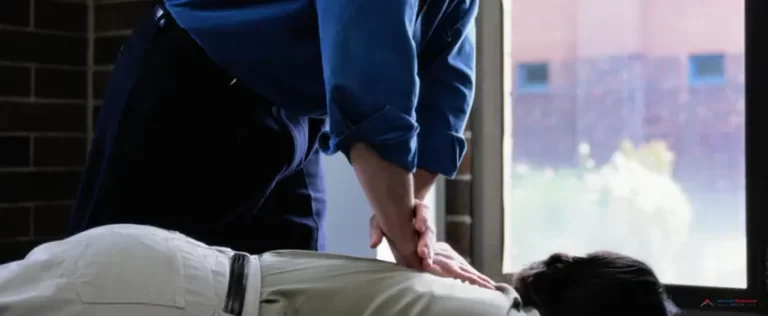Our shoulders are one of the most common areas of our body where we feel pain.
Most people don’t realize how much we use our shoulders throughout the day; the slightest discomfort can eventually lead to serious quality of life issues.
A frozen shoulder, or adhesive capsulitis, is a condition of the shoulders that can cause stiffness and pain in the joints. Learn more about this condition, how chiropractic treatments for frozen shoulders can help relieve symptoms, and more with Advanced Chiropractors Group.
What Is a Frozen Shoulder?
Frozen shoulder is a condition affecting the shoulder joints, usually characterized by stiffness and pain that gradually worsens, then disappears. It lasts between a year to three years.
Our shoulders have three bones that form a ball-and-socket joint: the collarbone, the upper arm, and the shoulder blade. The shoulder capsule holds these three bones together.
The shoulder capsule can become tight and thick, making it difficult to move the shoulder. Bands of tissue called adhesions develop, and in some cases, the shoulder capsule has lesser synovial fluid that lubricates the joint. These limit shoulder mobility even further.
A frozen shoulder is characterized by three stages that can last for months:
-
Freezing
During the freezing stage, you feel a sharp pain every time you move your shoulder. The pain may worsen over time and get more severe at night.
This stage may last from six to nine months.
-
Frozen
The frozen stage can last between four to twelve months. The pain you’ll feel will improve, but the stiffness will worsen, making it more difficult to move your shoulder and perform daily activities.
-
Thawing
This is the longest of the three stages of a frozen shoulder, where your range of motion slowly returns to normal. This stage may last between six months to two years.
Causes and Risk Factors
Doctors are not sure why the shoulder capsule freezes. But, they know it’s more common in patients who are over 40, particularly women.
Other risk factors for frozen shoulders are:
Systemic Diseases
Certain diseases increase the risk of developing a frozen shoulder. These include:
-
Hyperthyroidism
-
Cardiovascular disease
-
Tuberculosis
-
Hypothyroidism
-
Parkinson’s disease
-
Diabetes
Immobility
Patients with prolonged or decreased immobility of the shoulders are more likely to develop a frozen shoulder. Some reasons for an immobilized shoulder include:
-
Fractured arm
-
Surgery recovery
-
Rotator cuff injury
-
Stroke
Common Treatments for Frozen Shoulders
How to cure frozen shoulders quickly? Frozen shoulders do improve over time, but it can take up to three years. Your doctor may suggest the following to relieve some of the symptoms:
Physical Therapy
Physical therapy is a standard treatment for frozen shoulders. Certain exercises are done under the guidance of a physical therapist or a home program to help restore motion. These exercises may include range of motion and stretching exercises for the shoulder. Sometimes, you or your therapist may use heat to loosen the shoulder before stretching it.
Some example exercises your therapist may recommend include:
-
External rotation-passive stretch
You’ll need to stand in a doorway for this exercise. Bend the elbow of the affected arm to 90 degrees. While keeping your hand in place, turn your body in the opposite direction. Hold the position for 30 seconds, relax, and repeat.
-
Crossover arm stretch
Pull your arm to the other side of your chest, just below your chin, as far as you possibly can without causing pain. Hold the position for 30 seconds, relax, then repeat.
-
Forward flexion-supine position
Lay on your back while keeping your legs straight. Stretch your affected arm and lift the unaffected arm overhead until you feel a slight stretch. Keep this position for about 15 seconds, then slowly lower back to the starting position. Relax and continue.
Joint Distension
Your doctor might recommend joint distension as a treatment for frozen shoulders if your symptoms don’t respond to non-surgical treatments. This procedure expands and stretches the shoulder capsule by injecting large amounts of sterile fluid into the shoulder joint.
Corticosteroid Injection
Corticosteroids are another standard treatment for frozen shoulders. They are injected into the shoulder joint to reduce pain and increase your mobility. It’s beneficial during the beginning stages of a frozen shoulder.
Shoulder Arthroscopy
Your doctor may recommend surgery if your symptoms do not show any improvement through non-surgical measures. Surgery for frozen shoulder is often offered during the frozen stage to loosen the stiff shoulder capsule.
Your doctor will cut through the tight areas of the joint capsule using a small, pencil-sized instrument inserted through tiny incisions on your shoulder.
Chiropractic Treatments for Frozen Shoulders
Chiropractic treatments for frozen shoulders are the best way to relieve it. Patients often visit their general practitioner first to receive a diagnosis and to make sure they don’t have any underlying conditions before trying chiropractic shoulder adjustments. A chiropractor for frozen shoulder can also use X-rays and other diagnostic tools to assess patients properly.
A 2012 study examined the case files of 30 female and 20 male frozen shoulder patients who received chiropractic treatment between 11 to 51 days. Of the 50 cases included, 16 resolved entirely, 25 experienced 75% to 90% improvement, 8 experienced 50% to 75% improvement, and only 1 experienced 0% to 50% improvement.
Chiropractic shoulder adjustments can reduce pain, improve shoulder range of motion, and hasten recovery. Chiropractic treatments for frozen shoulders will depend on the severity of the condition, the length of time the patient has been suffering, and how much the condition has progressed.
Some chiropractic treatment techniques for frozen shoulders include:
Niel-Asher Technique (NAT)
The Niel-Asher Technique (NAT) is one of the best chiropractic treatment techniques for frozen shoulders. It employs deep stroking and compression/inhibition techniques combined in a choreographed manner.
The trigger points or tight muscle fibers are not regarded as the usual knots of muscular dysfunction but as ‘inputs’ to the spinal cord and central nervous system. Trigger points are painful, but they can stimulate the pain pathways that profoundly affect the nervous system and the spine.
Patients often report feeling like their joints were oiled after this chiropractic technique. They also regain normal muscular control soon after. It also reactivates the muscles around the joint, resulting in an immediate increase in strength and power.
Transcutaneous Electrical Nerve Stimulation (TENS)
A chiropractor for frozen shoulder may use a TENS unit to deliver electrical currents to specific points along a nerve pathway using electrodes taped to the skin. It’s not painful or dangerous. It’s unclear how TENS works, but it can stimulate the body to release pain-inhibiting chemicals or block pain fibers that transmit pain impulses.
Find Relief from Frozen Shoulders with Advanced Chiropractors Group
We are affiliated with top-notch chiropractors in Vail, CO, who can provide you with pain relief. We can connect you to the best chiropractor for frozen shoulder in your area. Contact us for any questions you may have.








